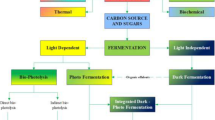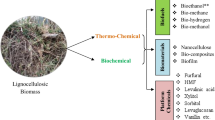Abstract
Low-cost technologies to overcome the recalcitrance of cellulose are the key to widespread utilization of lignocellulosic biomass for ethanol production. Efficient enzymatic hydrolysis of cellulose requires the synergism of various cellulases, and the ratios of each cellulase are required to be regulated to achieve the maximum hydrolysis. On the other hand, engineering of cellulolytic Saccharomyces cerevisiae strains is a promising strategy for lignocellulosic ethanol production. The expression of cellulase-encoding genes in yeast would affect the synergism of cellulases and thus the fermentation ability of strains with exogenous enzyme addition. However, such researches are rarely reported. In this study, ten endoglucanase and β-glucosidase co-expressing S. cerevisiae strains were constructed and evaluated by enzyme assay and fermentation performance measurement. The results showed that: (1) maximum ethanol titers of recombinant strains exhibited high variability in YPSC medium (20 g/l peptone, 10 g/l yeast extract, 100 g/l acid- and alkali-pretreated corncob) within 10 days. However, they had relatively little difference in USC medium (100 g/l acid- and alkali-pretreated corncob, 0.33 g/l urea, pH 5.0). (2) Strains 17# and 19#, with ratio (CMCase to β-glucosidase) of 7.04 ± 0.61 and 7.40 ± 0.71 respectively, had the highest fermentation performance in YPSC. However, strains 11# and 3# with the highest titers in USC medium had a higher ratio of CMCase to β-glucosidase, and CMCase activities. These results indicated that nutrition, enzyme activities and the ratio of heterologous enzymes had notable influence on the fermentation ability of cellulase-expressing yeast.


Similar content being viewed by others
References
Ekino K, Hayashi H, Moriyama M, Matsuda M, Goto M, Yoshino S, Furukawa K (2002) Engineering of polyploid Saccharomyces cerevisiae for secretion of large amounts of fungal glucoamylase. Appl Environ Microbiol 68:5693–5697
Fujita Y, Ito J, Ueda M, Fukuda H, Kondo A (2004) Synergistic saccharification, and directfermentation to ethanol, of amorphous cellulose by use of an engineered yeast strain codisplaying three types of cellulolytic enzyme. Appl Environ Microbiol 70(2):1207–1212
Gietz RD, Schiestl RH, Willems AR, Woods RA (1995) Studies on the transformation of intact yeast cells by the LiAc/SS-DNA/PEG procedure. Yeast 11(4):355–360
Hahn-Hägerdal B, Galbe M, Gorwa-Grauslund M-F, Lidén G, Zacchi G (2006) Bio-ethanol—the fuel of tomorrow from the residues of today. Trends Biotechnol 24:549–556
Hasunuma T, Kondo A (2012) Development of yeast cell factories for consolidated bioprocessing of lignocellulose to bioethanol through cell surface engineering. Biotechnol Adv 30:1207–1218
Himmel ME, Ding SY, Johnson DK, Adney WS, Nimlos MR, Brady JW, Foust TD (2007) Biomass recalcitrance: engineering plants and enzymes for biofuels production. Science 315:804–807
Hong JF, Yang HJ, Zhang K, Liu C, Zou SL, Zhang MH (2014) Development of a cellulolytic Saccharomyces cerevisiae strain with enhanced cellobiohydrolase activity. World J Microbiol Biotechnol 30(11):2985–2993
la Grange DC, de Haan R, van Zyl WH (2010) Engineering cellulolytic ability into bioprocessing organisms. Appl Microbiol Biotechnol 87:1195–1208
Lynd LR, Weimer PJ, van Zyl WH, Pretorius IS (2002) Microbial cellulose utilization: fundamentals and biotechnology. Microbiol Mol Biol Rev 66:506–577
Lynd LR, van Zyl WH, McBride JE, Laser M (2005) Consolidated bioprocessing of cellulosic biomass: an update. Curr Opin Biotechnol 16:577–583
Stephanopoulos G (2007) Challenges in engineering microbes for biofuels production. Science 315:801–804
Sticker AR, Mach RL, de Graaff LH (2008) Regulation of transcription of cellulases- and hemicellulases-encoding genes in Aspergillus niger and Hypocrea jecorina (Trichoderma reesei). Appl Microbiol Biotechnol 78:211–220
van Zyl WH, Lynd LR, den Haan R, McBride JE (2007) Consolidated bioprocessing for bioethanol production using Saccharomyces cerevisiae. Adv Biochem Eng Biotechnol 108:205–235
Wang G, Liu C, Hong J, Ma Y, Zhang K, Huang X, Zou S, Zhang M (2013) Comparison of process configurations for ethanol production from acid- and alkali-pretreated corncob by Saccharomyces cerevisiae strains with and without β-glucosidase expression. Bioresour Technol 142:154–161
Yamada R, Taniguchi N, Tanaka T, Ogino C, Fukuda H, Kondo A (2010a) Cocktail delta-integration: a novel method to construct cellulolytic enzyme expression ratio-optimized yeast strains. Microb Cell Fact 9:32
Yamada R, Tanaka T, Ogino C, Fukuda H, Kondo A (2010b) Novel strategy for yeast construction using delta-integration and cell fusion to efficiently produce ethanol from raw starch. Appl Microbiol Biotechnol 85(5):1491–1498
Yamada R, Taniguchi N, Tanaka T, Ogino C, Fukuda H, Kondo A (2011) Direct ethanol production from cellulosic materials using a diploid strain of Saccharomyces cerevisiae with optimized cellulase expression. Biotechnol Biofuels 4:8
Yang H, Liu C, Zou S, Ma Y, Hong J, Zhang M (2014) Improving bgl1 gene expression in Saccharomyces cerevisiae through meiosis in an isogenic triploid. Biotechnol Lett 36:1279–1285
Zhang YH, Lynd LR (2004) Toward an aggregated understanding of enzymatic hydrolysis of cellulose: noncomplexed cellulase systems. Biotechnol Bioeng 88:797–824
Acknowledgments
This work was supported by the National Natural Science Foundation of China (No. 31470208).
Author information
Authors and Affiliations
Corresponding author
Rights and permissions
About this article
Cite this article
Feng, C., Zou, S., Liu, C. et al. Ethanol production from acid- and alkali-pretreated corncob by endoglucanase and β-glucosidase co-expressing Saccharomyces cerevisiae subject to the expression of heterologous genes and nutrition added. World J Microbiol Biotechnol 32, 86 (2016). https://doi.org/10.1007/s11274-016-2043-2
Received:
Accepted:
Published:
DOI: https://doi.org/10.1007/s11274-016-2043-2




